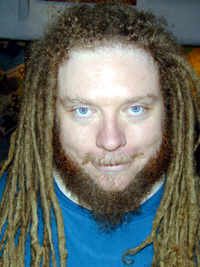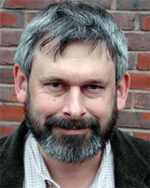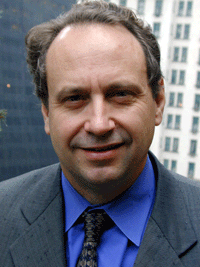
Introduction
By John Brockman
Part of Danny Hillis's charm is his childlike curiosity and demeanor. The first time we talked was on the telephone one Sunday morning in 1988 when he was at his home in Cambridge. We got into a serious discussion about the relationship of physics to computation. "This is interesting," he said. "I'd like to come to New York and continue the conversation face-to-face." Three hours later, my doorbell rang, and there stood a young man, looking like a clean-cut hippie. He had long hair, wore a plain white T-shirt and jeans, and carried nothing. He lived up to his reputation as the "boy wonder". We talked for hours.
Danny's energies at that time were concentrated on getting processors to work together so that computation takes place with communicating processors, as happens with the Internet. The Net's potential to become an organism of intelligent agents interacting with each other, with an intelligence of its own that goes beyond the intelligence of the individual agents fired Danny up. "In a sense," he said, "the Net can become smarter than any of the individual people on the Net or sites on the Net. Parallel processing is the way that kind of emergent phenomenon can happen. The Net right now is only a glimmer of that."
Danny described the Internet of that time simply as a huge document that is stored in a lot of different places and that can be modified by many people at once, but essentially a document in the old sense of the word. In principle, the Internet could be done on paper, but the logistics are much better handled with the computer. "I am interested in the step beyond that," he says, "where what is going on is not just a passive document, but an active computation, where people are using the Net to think of new things that they couldn't think of as individuals, where the Net thinks of new things that the individuals on the Net couldn't think of."
"In the long run, the Internet will arrive at a much richer infrastructure, in which ideas can potentially evolve outside of human minds. You can imagine something happening on the Internet along evolutionary lines, as in the simulations I run on my parallel computers. It already happens in trivial ways, with viruses, but that's just the beginning. I can imagine nontrivial forms of organization evolving on the Internet. Ideas could evolve on the Internet that are much too complicated to hold in any human mind."
The passages quoted above are from my book Digerati, published in 1995, a time when the ideas set forth by Danny were technologically implausible.
In 2000, still on the same track, Danny wrote the prescient paper Aristotle, in which he proposes "The Knowledge Web", again at a time when the technological possibilities did not equal the vision.
But now in 2004, Danny is a grown-up wonder, and we are in the age of Google, of boy wonders Sergey Brin and Larry Page, and the rapidly expanding potential of the Internet as a knowledge web.
In this regard, thanks to funding from the Markle Foundation, Danny been able to assemble a group of people to begin to discuss of the implementation of a medical application based on his ideas. Other possibilities for applications are open-ended. What has changed in the past nine years is that implementation of his ideas are now technologically feasible.
Rather than limit exploration of this set of ideas to a small group of thinkers, Danny has issued an invitation to the participants of Edge—itself an example of a knowledge web, and a very sophisticated one at that—to enter into a discussion on Aristotle.
—JB
W. DANIEL (Danny) HILLIS is currently Chairman and Chief Technology Officer of Applied Minds, Inc., is best known for his innovative work in the design and implementation of the massively parallel supercomputer. Applied Minds is a research and development company creating a range of new products and services in software, entertainment, electronics, biotechnology and mechanical design. He is the author of The Pattern On The Stone: The Simple Ideas That Make Computers Work.
Danny Hillis's Edge Bio Page
THE REALITY CLUB: Responses by Douglas Rushkoff, Marc D. Hauser, Stewart Brand, Jim O'Donnell, Jaron Lanier, Bruce Sterling, Roger Schank, George Dyson, Howard Gardner, Seymour Papert, Freeman Dyson, Esther Dyson, Kai Krause, Pamela McCorduck







